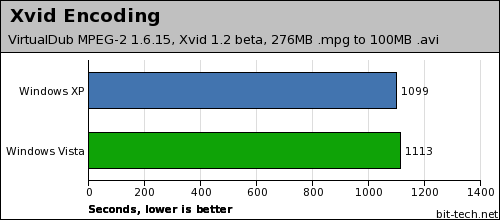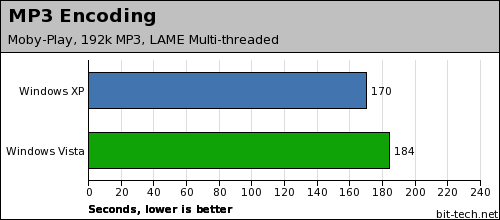
Performance
Whilst a lot of headlines have been made by people complaining about the kind of hardware requirements Vista has to run well, chances are most enthusiasts reading bit-tech will not find Vista's recommended specification much of a problem - 1GHz processor, 1GB of RAM and a 128MB DirectX 9.0 graphics card. Indeed, Microsoft has actually done some work to tune up performance in Vista, so that it runs at least as fast in XP in many situations.SuperFetch and ReadyBoost:
This is a new algorithm that caches frequently used data and bits of applications into main memory, meaning that you don't have to pull them off the hard drive every time you want them. How good is the technology? Well, using machine learning technology, it can go as far as to work out which apps and docs you're likely to be using at different points of the day (e.g. music in the evening, work in the day) and cache appropriately.If you've got a lot of system memory - 64-bit Ultimate supports 128GB - SuperFetch will just cache there. However, if you have a smaller amount of memory, many USB drives will be able to act as a cache using a feature called ReadyBoost. Simply plug in a flash drive - it needs to have a minimum write and read speed, and the only real way to tell if your key will work is to try it - and the system will begin caching to the drive, using the flash as a faster storage medium than hard disk. Is it worth adding in a USB drive to an über system? No, is the simple answer. ReadyBoost is a great addition to systems with limited main memory. In almost every situation, you'll get more performance boost from just upgrading main memory to using a ReadyBoost USB key.
Application prioritisation:
As you surely know from your days on XP, you can prioritise services on the system using Task Manager and the Services Manager. Vista uses a similar algorithm and prioritises applications on the fly. This should help, for example, where you have a virus scan running in the background whilst gaming - Vista will recognise that the game needs more resources and will slow the virus scan down accordingly.Windows Mobility Center:
For notebook users, setting up the system to get the best performance/battery life compromise has always meant trawling through many different control panel icons to set display properties, processor properties, graphics card scaling and the like. This new control panel icon brings everything under one roof, making it far easier to set up profiles for battery and mains power.Testing
To see if we could ascertain a difference in performance between XP and Vista, we ran a number of our standard system testing benchmarks across the same system, installed with both. Our system was:- AMD Athlon FX-60
- 2GB Corsair Pro Series XMS 4000
- ATI Radeon X1900 XTX
- Creative SoundBlaster X-Fi Fatal1ty
- Abit AN8 32X nForce 4 motherboard
Xvid Encoding:
We tested video encoding performance using VirtualDub MPEG-2 version 1.6.15 and a multi-threaded version of the Xvid codec, along with the LAME MT MP3 encoder for encoding audio. We did a two-pass encode of a 15-minute 276MB digital TV recording with a target file size of 100MB.
Audio Encoding:
We used LAME MT for our audio encoding test - it's the multi-threaded version of the popular LAME MP3 encoder. We ran tests with the Microsoft compiler. We converted all 18 tracks from Moby's popular Play album to a 192kbps variable bit-rate MP3.
File compression:
For our compression test, we compressed and encrypted the MPEG-2 source file from our video encoding test with the highest quality compression ratio into a RAR archive.
SuperPi:
As a test of overhead on a raw CPU calculation, we calculated Pi to 2m places.
We believe that a lot of these performance problems are related to the earliness of the drivers. Over time, we feel that Vista performance will at least get close to the performance obtainable inside Windows XP - the completely new driver platform is more than likely the route of most of the apparent shortfalls.

MSI MPG Velox 100R Chassis Review
October 14 2021 | 15:04








Want to comment? Please log in.